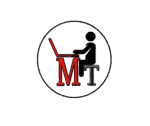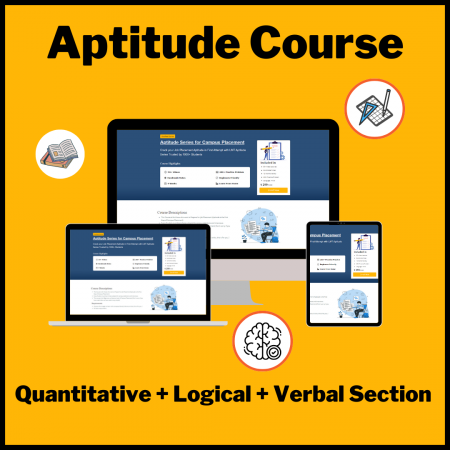Computer Network Viva Questions

-
Computer Network Viva Questions
Computer Network Viva Questions
Computer Network System is semester 5 subject of final year of computer engineering in Mumbai University. Prerequisite for studying this subject are Digital Communication Fundamentals.
Course objective of the subject Computer Network is to introduce concepts and fundamentals of data communication and computer networks. To explore the inter-working of various layers of OSI. To explore the issues and challenges of protocols design while delving into TCP/IP protocol suite. To assess the strengths and weaknesses of various routing algorithms. To understand the transport layer and various application layer protocols. Course Outcomes of the subject Computer On successful completion of course learner will be able to: Demonstrate the concepts of data communication at physical layer and compare ISO – OSI model with TCP/IP model. Demonstrate the knowledge of networking protocols at data link layer. Design the network using IP addressing and subnetting / supernetting schemes. Analyze various routing algorithms and protocols at network layer. Analyze transport layer protocols and congestion control algorithms. Explore protocols at application layer.
A computer network is a group of computers that use a set of common communication protocols over digital interconnections for the purpose of sharing resources located on or provided by the network nodes. The interconnections between nodes are formed from a broad spectrum of telecommunication network technologies, based on physically wired, optical, and wireless radio-frequency methods that may be arranged in a variety of network topologies. The nodes of a computer network may include personal computers, servers, networking hardware, or other specialised or general-purpose hosts. They are identified by hostnames and network addresses. Hostnames serve as memorable labels for the nodes, rarely changed after initial assignment. Network addresses serve for locating and identifying the nodes by communication protocols such as the Internet Protocol. Computer networks may be classified by many criteria, for example, the transmission medium used to carry signals, bandwidth, communications protocols to organize network traffic, the network size, the topology, traffic control mechanism, and organizational intent. Computer networks support many applications and services, such as access to the World Wide Web, digital video, digital audio, shared use of application and storage servers, printers, and fax machines, and use of email and instant messaging applications.
Module Introduction to Networking consists of the following subtopics Introduction to computer network, network application, network software and hardware components (Interconnection networking devices), Network topology, protocolhierarchies, design issues for the layers, connection oriented and connectionless services. Reference models: Layer details of OSI, TCP/IP models. Communication between layer. Module Physical Layer consists of the following subtopics Introduction to Communication System, digital Communication, Electromagnetic Spectrum.Guided Transmission Media: Twisted pair, Coaxial, Fiber optics. Unguided media (Wireless Transmission): Radio Waves, Microwave, Bluetooth, Infrared, Circuit and Packet Switching. Module Data Link Layer consists of the following subtopics DLL Design Issues (Services, Framing, Error Control, Flow Control), Error Detection and Correction(Hamming Code, CRC, Checksum) , Elementary Data Link protocols , Stop and Wait, Sliding Window(Go Back N, Selective Repeat), HDLC. Medium Access Control sublayer Channel Allocation problem, Multiple access Protocol( Aloha, Carrier Sense Multiple Access (CSMA/CD), Local Area Networks – Ethernet (802.3).
Network layer consists of the following subtopics Network Layer design issues, Communication Primitives: Unicast, Multicast, Broadcast. IPv4 Addressing (classfull and classless), Subnetting, Supernetting design problems ,IPv4 Protocol, Network Address Translation (NAT),. Routing algorithms : Shortest Path (Dijkastra‘s), Link state routing, Distance Vector Routing. Protocols – ARP,RARP, ICMP, IGMP.Congestion control algorithms: Open loop congestion control, Closed loop congestion control, QoS parameters, Token & Leaky bucket algorithms. Module Transport Layer consists of the following subtopics The Transport Service: Transport service primitives, Berkeley Sockets, Connection management (Handshake), UDP, TCP, TCP state transition, TCP timers.TCP Flow control (sliding Window), TCP Congestion Control: Slow Start.
Module Application Layer consists of the following subtopics DNS: Name Space, Resource Record and Types of Name Server. HTTP, SMTP, Telnet, FTP, DHCP. Suggested Texts Books for Computer Networks by Mumbai University are as follows A.S. Tanenbaum, Computer Networks, Pearson Education, (4e).B.A. Forouzan, Data Communications and Networking, TMH (5e). James F. Kurose, Keith W. Ross, Computer Networking, a Top-Down Approach Featuring the Internet, Addison Wesley, (6e). Suggested Reference Books for Computer Networks by Mumbai University are as follows S.Keshav: An Engineering Approach to Computer Networking, Pearson. Natalia Olifer& Victor Olifer, Computer Networks:Principles, Technologies & Protocols for Network Design, Wiley India, 2011. Larry L.Peterson, Bruce S.Davie, Computer Networks A Systems Approach, Second Edition (The Morgan Kaufmann Series in Networking).
What you’ll Learn:
- Concepts and fundamentals of data communication and computer networks.
- Explore the inter-working of various layers of OSI.
- Issues and challenges of protocols design while delving into TCP/IP protocol suite.
- Assess the strengths and weaknesses of various routing algorithms.
- Learning the OSI layers and their Layer Protocols.
Description:
This course provides the concepts of data communication at physical layer and compares ISO – OSI model with TCP/IP model. It provides the knowledge of networking protocols at data link layer. Learn the designing of the network using IP addressing and subnetting / supernetting schemes. Also, we will walk through various routing algorithms, their applications and other properties. Exploring the layer protocols lastly would be cherishing!
Join in to learn Computer Networks, equally important from the academic as well as real-world knowledge.
Modules Covered:
- Introduction to Networking
- Physical Layer
- Data Link Layer
- Network Layer
- Transport Layer
- Application Layer
Feel forward to have a look at course description and demo videos and we look forward to see you learning with us.
Prepare For Your Placements: https://lastmomenttuitions.com/courses/placement-preparation/
![]()
/ Youtube Channel: https://www.youtube.com/channel/UCGFNZxMqKLsqWERX_N2f08Q
Follow For Latest Updates, Study Tips & More Content!
Course Features
- Lectures 6
- Quizzes 0
- Duration 50 hours
- Skill level All levels
- Language English
- Students 84
- Certificate No
- Assessments Yes


![SEBI GRADE A – IT 2025 SEBI GRADE A 2025 – IT [ Phase 1 + Phase 2 ]](https://lastmomenttuitions.com/wp-content/uploads/2025/12/SEBI-GRADE-A-IT-2025-450x450.png)
